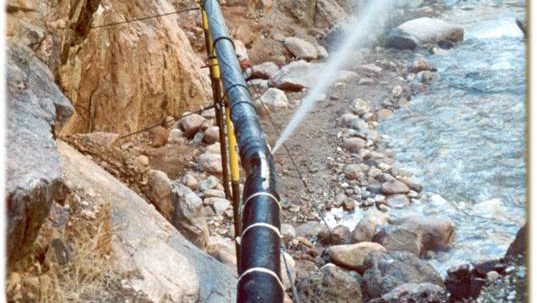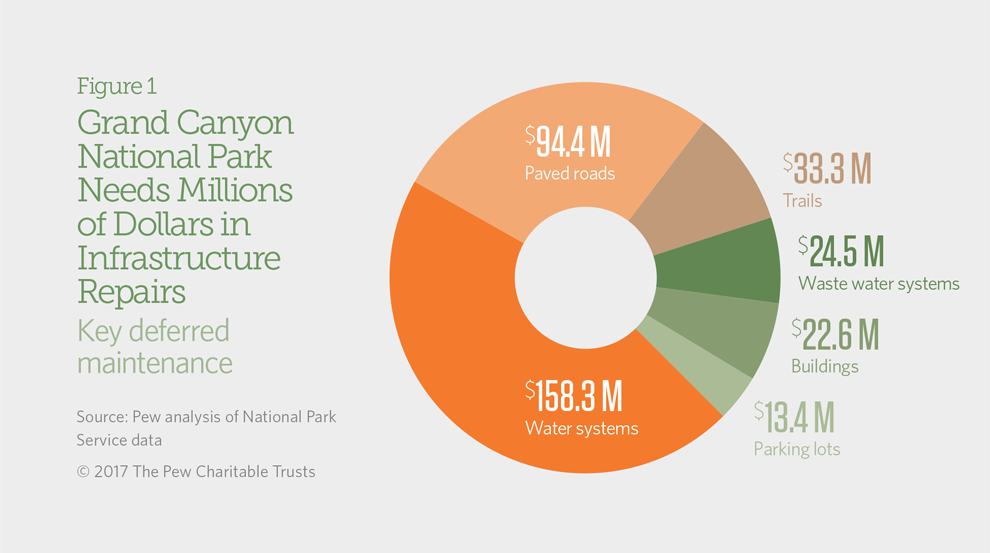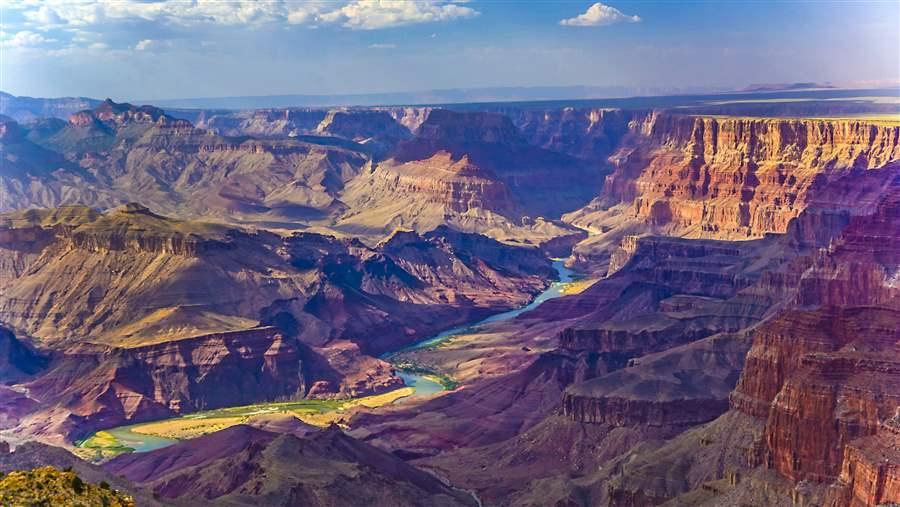Grand Canyon National Park
Arizona
Pew created this case study using National Park Service deferred maintenance data issued in fiscal year 2015. The information listed here may no longer reflect the NPS site’s current condition or maintenance requirements. To find the most up-to-date information, please use the National Park Repair Needs tool.
This case study was updated on July 31, 2017, to reflect newly released 2016 data and to correct references to calendar and fiscal year.
The 16-mile pipeline that supplies drinking water for millions of Grand Canyon visitors each year needs $150 million worth of repairs.
Overview
The iconic Grand Canyon is a staggering 18 miles wide and a mile deep. It is recognized worldwide for its immense size and spectacularly colorful landscape. Located in northern Arizona, the Grand Canyon is geologically significant because its layers of ancient rocks, exposed over millions of years by the force of the Colorado River, reveal a record of the Earth’s history. While the canyon itself has been “under construction” for millions of years, the park was established Feb. 26, 1919, to preserve and protect what many people consider one of the seven wonders of the natural world.1 Unfortunately, an aging water system, increasing motor vehicle traffic, and trail deterioration have created a backlog of more than $370 million in maintenance and repair projects.

The National Park Service has more than $150 million in overdue repairs to the 16-mile pipeline that supplies drinking water for the millions who visit Grand Canyon National Park each year.
© National Park Service
Maintenance challenges
The Grand Canyon is an extremely popular destination, drawing millions of people from around the world annually. While many visitors are content to take in vistas from the canyon’s rims, others hike, camp, and raft on the Colorado River. Visitors often make reservations up to a year in advance to secure camping and lodging spots. This popularity, however, poses challenges for National Park Service (NPS) staff. They are working to alleviate traffic congestion and secure enough parking and potable water but have found it difficult to resolve these issues, given a lack of adequate funding for maintenance.
The park has a deferred maintenance backlog of $372 million, with more than $150 million required to fix the Trans-Canyon Pipeline. This 16-mile pipeline brings water from a spring on the North Rim to the South Rim and is the sole source of potable water for park visitors, local residents, and concession operations. It is also the only water source should a fire break out and threaten any of the park’s hundreds of historic structures.2 The NPS estimates that five to 30 major pipeline breaks happen annually, requiring costly fixes and sometimes the closure of popular hiking and camping destinations, such as Phantom Ranch at the bottom of the canyon.
Three of the main trails—South Kaibab, Bright Angel, and North Kaibab3 —converge at the bottom and are in need of repair. To fix all of the park’s well-worn trails would cost $33 million. Another $11 million in deferred maintenance is evident in camping areas, picnic shelters, and at scenic overlooks. Desert View Drive, which runs along 25 miles of the South Rim, needs more than $18 million in repairs. At the canyon’s North Rim, Cape Royal Road—leading to the widest panorama of any Grand Canyon overlook—requires more than $10 million in improvements. More than 200 historic structures also need to be repaired, at a cost of $5.5 million.
The Grand Canyon is important to the Latino community. My friends and I decided to start Latinos for Parks because we wanted to help fix our parks so we can continue to enjoy them into the future.Anakarina Rodriguez, Latinos for Parks
Recommendations
To address the infrastructure needs at Grand Canyon and other NPS sites in Arizona and across the country, Congress should:
- Ensure that infrastructure initiatives include provisions to address park maintenance.
- Provide dedicated annual federal funding for national park repairs.
- Enact innovative policy reforms to ensure that deferred maintenance does not escalate.
- Provide more highway funding for NPS maintenance needs.
- Create more opportunities for public-private collaboration and donations to help restore park infrastructure.
Grand Canyon National Park Facts
2016
|
Visitor spending |
$648.2 million |
|
Jobs created by visitor spending |
9,800 |
|
Economic output |
$904.3 million |
|
Labor income |
$334.2 million |
|
Visits |
5,969,811 |
|
Deferred maintenance (fiscal year 2015) |
$372.1 million |
Sources: National Park Service, “Annual Visitation Reports by Years: 2006 to 2016,” accessed Feb. 17, 2017, https://irma.nps.gov/Stats/SSRSReports/National Reports/Annual Visitation By Park (1979 - Last Calendar Year); National Park Service, “Visitor Spending Effects,” accessed Aug. 22, 2016, https://www.nps.gov/subjects/socialscience/vse.htm; National Park Service, “NPS Deferred Maintenance Reports,” accessed Aug. 19, 2016, https://www.nps.gov/subjects/plandesignconstruct/defermain.htm; Pew converted NPS data from this webpage and other NPS sources into a searchable database.
© 2017 The Pew Charitable Trusts

The Pew Charitable Trusts works alongside the National Parks Conservation Association, the National Trust for Historic Preservation, and other national and local groups to ensure that our national park resources are maintained and protected for future generations to enjoy.
Endnotes
- Grand Canyon Explorer, “The Seven Natural Wonders of the World,” accessed Sept. 22, 2016, http://www.bobspixels.com/kaibab.org/misc/gc_7wond.htm.
- National Park Service, “Grand Canyon to Replace Portion of Trans-Canyon Pipeline at Phantom Ranch,” news release, accessed Sept. 22, 2016, https://www.nps.gov/grca/learn/news/replace-portion-tcp.htm.
- Ibid.


Arizona: Why We Need to Fix Our Parks, 2019


National Park Deferred Maintenance Needs

National Park Maintenance Needs Take Center Stage










